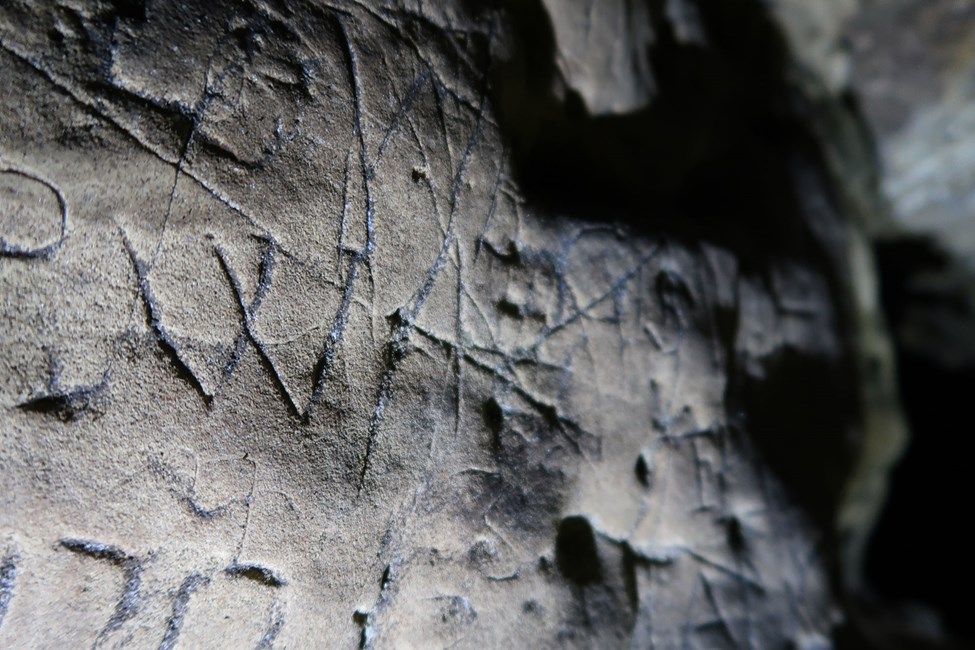You Can Now Explore a 3-D Model of Cave Covered in Creepy ‘Witches’ Marks’
Visitors spotted hundreds of etchings designed to ward off evil while exploring a cave in England’s Creswell Crags
Earlier this year, cavers exploring Creswell Crags—an ancient limestone gorge in England’s East Midlands—chanced upon Great Britain’s largest assemblage of “witches’ marks,” or carvings designed to ward off evil spirits. Etched on the walls of one of the historic site’s caves, most of the markings are in areas closed to the public. Thanks to a new 3-D rendering of the cave, however, interested parties can now examine the superstitious medieval engravings from the comfort of their own homes.
Humans have left their mark (or in this case, markings) on Creswell Crags since at least 12,800 years ago, when hunter-gatherers left depictions of extinct animals and mysterious figures on the caves’ walls. Over the following centuries, locals and visitors alike passed through the gorge, leaving their mark along the way.
Staff at the Creswell Crags Museum & Heritage Centre had long thought the majority of marks seen at the site dated to modern times. But when Hayley Clark and Ed Waters, members of the underground exploration society Subterranea Britannica, toured the Crags back in February, they recognized some of the carvings as witches’ marks.
Experts examined the engravings and confirmed their identity as protective medieval symbols. (According to Historic England, witches’ marks are also known as apotropaic marks—a name derived from the Greek word for “turn away” or “ward off.”) Numbering in the hundreds, the markings range from letters to symbols, patterns and shapes.
Paul Baker, director of Creswell Heritage Trust, tells the Guardian’s Mark Brown that managers and tour guides had long known of the marks’ existence.
“But we told people it was Victorian graffiti,” Baker says. “We had no idea.”

According to a press release, the marks include multiple references to the Virgin Mary: Double “VV” engravings allude to the biblical figure’s title of Virgin of Virgins, while “PM” stands for Pace Maria. Other etchings depict boxes, mazes and diagonal lines designed to trap evil forces. Locals would probably have engraved these marks in response to death, illness, poor harvest or other hardships viewed as manifestations of evil.
The markings seen today likely represent just a fraction of those originally created. Archaeologists excavating the crags during the 19th century widened the caves, tunneling through the stone and inadvertently destroying surface etchings.
Researchers at Creswell Crags partnered with Jeremy Lee of Sheffield Hallam University to digitize the marks. As the animator explains in a university press release, he used lidar (light detection and ranging) and photogrammetry to create detailed 3-D renderings of the caves, making them “accessible to a broad and distanced audience, whilst enabling a detailed viewing and analysis of the marks inside.”
Alison Fearn, a Leicester University expert on “protective marks,” tells the Guardian that it remains unclear what great evil locals were hoping to ward off by creating the markings.
She says, “It could be fairies, witches, whatever you were fearful of, it was going to be down there.”
John Charlesworth, a heritage facilitator at the crags, notes that many medieval people feared the natural world: “These are places where supernatural forces in an untamed non-human environment could be at work,” he tells Brown. “Local people are in the jaws of this monstrous landscape.”
In the Sheffield Hallam press release, Paul Baker, director of Creswell Crags, adds, “We may never know what the makers of these marks were seeking protection from or the fear they experienced but the marks are extremely numerous and the concentration in this chamber suggests that this was a significant place.”
Witches’ marks aren’t just found in caves. Per Historic England, protective markings have also been discovered at the entrances of barns, homes, churches and inns. Although the practice’s origins stretch all the way back to antiquity, most markings seen in Great Britain date to between the 16th and early 19th centuries. Markings weren't the only way people kept evil at bay: Some superstitious individuals even embedded “witch bottles” in the walls or under the hearths of their homes to prevent witches from gaining entry.